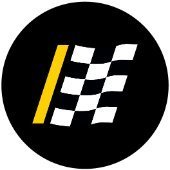-
Welcome to Auto Parts Forum
Whether you are a veteran automotive parts guru or just someone looking for some quick auto parts advice, register today and start a new topic in our forum. Registration is free and you can even sign up with social network platforms such as Facebook, X, and LinkedIn.
LKQ Corporation Releases Its 2021 Sustainability Report And Unveils Its New Brand Identity
-
Similar Topics
-
By Advance Auto Parts
RALEIGH, N.C.--(BUSINESS WIRE)-- Advance Auto Parts, Inc. (NYSE: AAP), a leading automotive aftermarket parts provider in North America that serves both professional installers and do-it-yourself customers, will report financial results for its first quarter ended April 19, 2025, before the market opens on Thursday, May 22, 2025. The company has scheduled a conference call and webcast to begin at 8:00 a.m. ET on Thursday, May 22, 2025.
A live webcast will be available on the company’s Investor Relations website (
link hidden, please login to view). To join by phone, please link hidden, please login to view online for dial-in and passcode information. Upon registering, participants will receive confirmation with call details and a registrant ID. A replay of the conference call and webcast will be available on the company’s Investor Relations website for one year. About Advance Auto Parts
Advance Auto Parts, Inc. is a leading automotive aftermarket parts provider that serves both professional installers and do-it-yourself customers. As of December 28, 2024, Advance operated 4,788 stores primarily within the United States, with additional locations in Canada, Puerto Rico and the U.S. Virgin Islands. The company also served 934 independently owned Carquest branded stores across these locations in addition to Mexico and various Caribbean islands. Additional information about Advance, including employment opportunities, customer services, and online shopping for parts, accessories and other offerings can be found at
link hidden, please login to view.
Investor Relations Contact:
Lavesh Hemnani
T: (919) 227-5466
E: [email protected]
Media Contact:
Nicole Ducouer
T: (984) 389-7207
E: [email protected]
Source: Advance Auto Parts, Inc.
link hidden, please login to view -
By Dorman Products
Programming instructions | Dorman replacement keyless remotes and programmers for CDJR vehicles
-
By NAPA
ATLANTA, April 29, 2025 /
link hidden, please login to view/ -- Genuine Parts Company (NYSE: GPC), a leading global service provider of automotive and industrial replacement parts and value-added solutions, announced that its shareholders elected Ms. Laurie Schupmann as a new director of the company. Additionally, Messrs. Gary Fayard and Johnny Johns and Mses. Betsy Camp and Wendy Needham have each reached the mandatory retirement age for board members and have stepped down from their roles as directors. Prior to her retirement in 2023, Ms. Schupmann spent nearly 40 years with PwC, an audit and assurance, consulting and tax advisory firm, serving in various leadership roles of increasing responsibility, including as a Global Client Partner from October 1995 to June 2023.
link hidden, please login to view -
-
By Counterman
Stellantis celebrated a major milestone with the opening of its new Mopar Parts Distribution Center (PDC) in East Fishkill, New York. The $64 million facility enhances parts distribution across the Northeast and supports both dealers and customers.
Leadership and Community Support
Mopar leaders and a Dutchess County legislator spoke to state officials,
link hidden, please login to view partners, UAW leaders and employees. They emphasized the new facility’s impact on customer service in the local community. Commitment to Growth and Service
“The launch of our new Mopar Parts Distribution Center in East Fishkill marks a significant investment in our long-term growth and service capabilities,” said Mopar Senior Vice President for North America Darren Bradshaw. “This facility supports our dedicated UAW-represented workforce with the tools and environment they need to succeed. By integrating cutting-edge technology and automation, we’re strengthening our supply chain, accelerating delivery times and reinforcing our commitment to dealer and customer satisfaction along with employee success.”
Mopar Parts Distribution Center Capacity and Strategic Positioning
The 534,000-sq.-ft. facility is strategically located to serve dealerships and customers across the Northeast. It houses over 46,000 unique parts and expects to process more than 2 million shipments each year.
Boosting Local Economy and Infrastructure
“The launch of the Mopar Parts Distribution Center is a tremendous boost for East Fishkill,” said Dutchess County Legislator Steve Caswell. “This facility is not just an investment in infrastructure, but in our people, our businesses and our future. Stellantis’ decision to bring this advanced distribution center and nearly 100 jobs to our community underscores our town’s potential as a growing hub for technological and economic development.”
Introducing Next-Generation AutoStore Technology
This Mopar PDC is
link hidden, please login to view’ first U.S. facility using the AutoStore automated storage and retrieval system. AutoStore includes 40 robotic units using advanced technology to move along a grid above stored parts. They retrieve parts from 70,000 bins across 18,000 square feet and deliver them to processing stations. PDC employees then prepare the final shipments for distribution. Enhancing Efficiency and Inventory Management
AutoStore automation boosts speed, accuracy and dependability of order completion. It also reduces the warehouse footprint needed for storing inventory.
Sustainability and the Mopar Parts Distribution Center
The East Fishkill Mopar Parts Distribution Center is one of 21 Mopar facilities in North America serving dealers and aftermarket customers. Mopar merged the Tappan and Boston PDCs to reduce the region’s storage footprint. The AutoStore system further decreases the physical space needed at the new East Fishkill location. These efforts support Stellantis’ broader goal of lowering carbon emissions.
The post
link hidden, please login to view appeared first on link hidden, please login to view.
link hidden, please login to view
-





Recommended Posts
Join the conversation
You can post now and register later. If you have an account, sign in now to post with your account.
Note: Your post will require moderator approval before it will be visible.